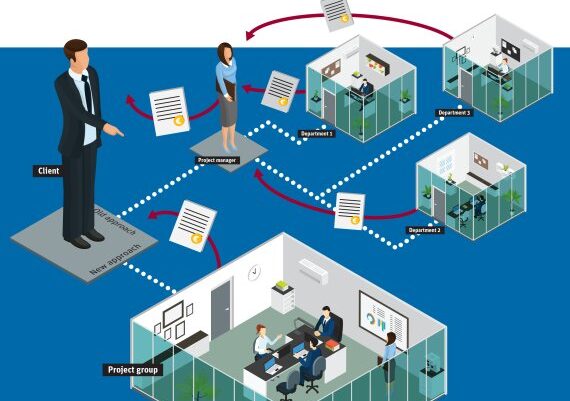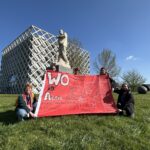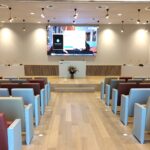One project administration for the whole of Wageningen Research. That will be in place by mid-April. Researchers from different institutes will no longer have to send each other internal quotes.
Internal operations at WUR is not the sort of topic you use to liven up the conversation at birthday parties. But researchers in the nine Wageningen Research institutes cannot always avoid it. The get asked with increasing frequency to do research together. But that means taking some big hurdles.
The researchers have to hire each other through ‘commitment letters’, a kind of internal quotation including financial and legal agreements between the Wageningen Science Groups. They agree between them who is doing which part of the assignment for x many hours at a rate of y, the controllers and legal advisers at all the Science Groups involved check these arrangements, and the directors then ratify them.
Craziness
‘In terms of operations, the institutes currently treat each other like external parties,’ says Menno van Manen, Director of Operations at the Animal Sciences Group. This leads to internal red tape, with amusing consequences at times. ‘I have signed contracts between Wageningen Livestock Research and Wageningen Bioveterinary Research, both part of the Animal Sciences Group’, says Van Manen. ‘Then I signed at the bottom of the document on both the left side and the right side.’
The cause of this craziness: the nine institutes that make up Wageningen Research each have their own project administration. It happened like this. Ten years ago, WUR wanted to introduce a new project management system, Kameleon, but that went wrong. In 2012, WUR therefore decided to fall back on MyProjects, Wageningen Environmental Research’s project administration system. The other eight institutes all got a copy of MyProjects and were allowed to add their own rules for time-writing, leave and registration. ‘The institutes had different wishes, and they wanted to decide for themselves how they organized things,’ recalls Van Manen. Higher up the hierarchy, no one did anything to stop that. ‘We were happy that at least there was a system that worked, after Kameleon.’
Decompartmentalizing
The past few years, however, have seen an increase in the number of multidisciplinary research questions – and therefore the number of internal quotations. So in 2017, the Executive Board set up a Decompartmentalization working party, which included Martijn Hackmann, Operations Director at the Social Sciences Group. That working party concluded that the barriers between the administrations hampered collaboration between the institutes. As the owner of MyProjects, Van Manen was asked whether it was possible to remove these barriers without setting up a whole new system. It did prove possible. The working party has used the past six months to draw up uniform agreements on the way Wageningen Research staff should establish projects, under which conditions the institutes collaborate, and which rules of the game apply between researchers.
Hiring an expert from another institute will get easier
An example: Wageningen Economic Research (WEcR) acquires an assignment together with Wageningen Plant Research and Wageningen Environmental Research. WEcR is the contracting institute which makes agreements with the client and provides the project leader. That project leader consults the researchers at Plant and Environment, and agrees how many hours they will put into the project. There is a uniform rate for this. Chief service provider WEcR gets any profits from the project, but also bears any risks. In exceptional situations, when two institutes have acquired a big project together, with clear individual input, separate agreements can be made on profit margins and risks.
Cultuurverandering
This new approach will make the lines between the Science Groups shorter. It will also be possible to hire an expert from another institute to do some work for a project without a lot of red tape. ‘Then we can mobilize our expertise better for our clients,’ says Van Manen. He also expects that his own role, and that of the other operations directors, will shrink. ‘With this approach you place more trust in the project leader.’
This is quite a big culture change, the directors think. ‘The institutes used to aim at maximizing their own turnover and margins. Now we have to collaborate more and accept that the margin sometimes comes to us and sometimes to the other institute.’
To arrive at a single system, the directors had to make a lot of decisions. On which date, for example, are we going to register the hours of the previous month? Which functions – things like client evaluations, for instance – will we link with MyProjects? Will MyProjects generate a project number itself, or will the project leader do that? ‘There are loads of little things you have to make arrangements for,’ says Hackmann. But the end is in sight. On 17 April the Wageningen Environmental Research software developers expect to have tied up all the loose ends and institutes will be able to put projects into a joint system. One step closer to OneWageningen.
University not yet involved
One bureaucratic barrier remains standing within WUR: the one between Wageningen Research and Wageningen University. Institute staff and university researchers cannot yet register hours together for the same project. ‘At the university, PhD students only declare labour costs for a project, whereas institute staff charge projects an integral rate that covers accommodation and ICT costs too. It is very difficult to bring that under a single system,’ says Menno van Manen, Operations Director at the Animal Sciences Group. ‘It would have a lot of advantages. Take the Animal Nutrition group. University researchers in that group regularly work on projects for external clients. Now they have to send their bills for that to Wageningen Livestock Research. A single WUR-wide project system would be great for a group like that.’ WUR is soon going to look into the feasibility of such a system.

 Illustration: VectorPot / Geert-Jan Bruins
Illustration: VectorPot / Geert-Jan Bruins 

